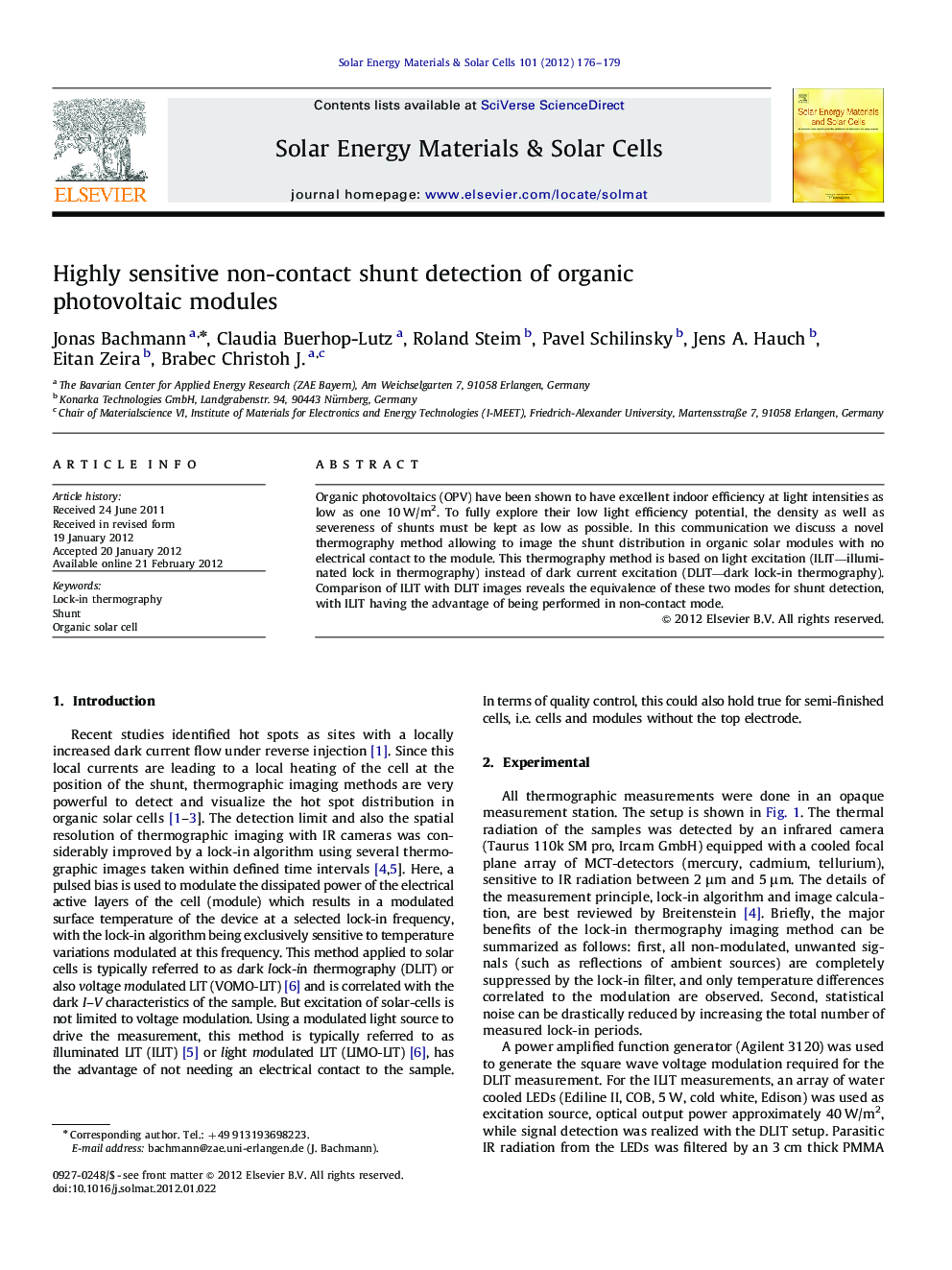| Article ID | Journal | Published Year | Pages | File Type |
|---|---|---|---|---|
| 79293 | Solar Energy Materials and Solar Cells | 2012 | 4 Pages |
Organic photovoltaics (OPV) have been shown to have excellent indoor efficiency at light intensities as low as one 10 W/m2. To fully explore their low light efficiency potential, the density as well as severeness of shunts must be kept as low as possible. In this communication we discuss a novel thermography method allowing to image the shunt distribution in organic solar modules with no electrical contact to the module. This thermography method is based on light excitation (ILIT—illuminated lock in thermography) instead of dark current excitation (DLIT—dark lock-in thermography). Comparison of ILIT with DLIT images reveals the equivalence of these two modes for shunt detection, with ILIT having the advantage of being performed in non-contact mode.
